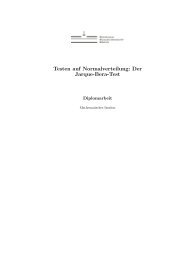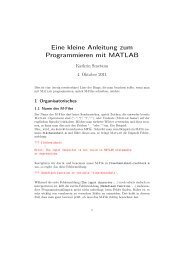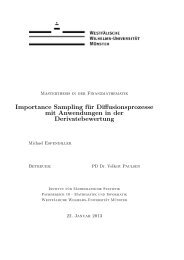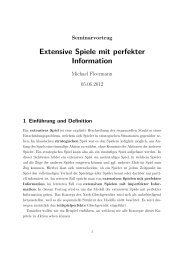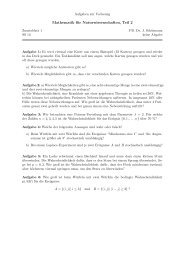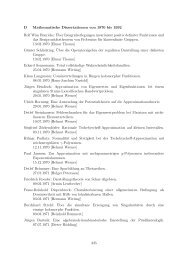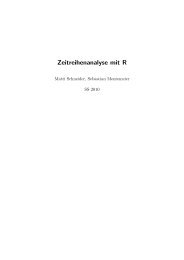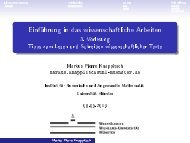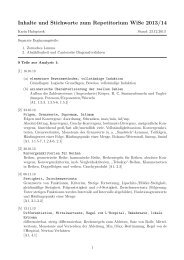Margulis Lemma
Margulis Lemma
Margulis Lemma
Create successful ePaper yourself
Turn your PDF publications into a flip-book with our unique Google optimized e-Paper software.
38 VITALI KAPOVITCH AND BURKHARD WILKING<br />
For δ > 0 define<br />
S i (δ) := { g ∈ Γ i | d(p, gp) ≤ δ for all p ∈ B 1/δ (˜p i ) } and Γ iδ := 〈S i (δ)〉 ⊂ Γ i<br />
for i ∈ N ∪ {∞}.<br />
By Colding and Naber [CN10], Γ ∞ is a Lie group. In particular, the component<br />
1<br />
group Γ ∞ /Γ ∞0 is discrete and hence there is some positive δ 0 ≤ min{ε 1 ,<br />
2D } such<br />
that Γ ∞δ is given by the identity component of Γ ∞ for all δ ∈ (0, 2δ 0 ).<br />
It is easy to see that this property carries over to the sequence in the following<br />
sense. We fix a large constant R ≥ 10, to be determined later, and put ε 0 := δ 0 /R.<br />
Then Γ iδ = Γ iε0 for all δ ∈ [ε 0 /1000, Rε 0 ] and all i ≥ i 0 (R).<br />
We claim that Γ iε0 is normal in Γ i . In fact, Γ i can be generated by elements<br />
which displace ˜p i by at most 2D ≤ 1 ε 0<br />
. It is straightforward to check that for any<br />
g i ∈ Γ i satisfying d(g i ˜p i , ˜p i ) ≤ 1 ε 0<br />
we have g i S(ε 0 /2)g −1<br />
i ⊂ S(ε 0 ). Thus,<br />
g i Γ iε0/2g −1<br />
i ⊂ Γ iε0 = Γ iε0/2<br />
and clearly the claim follows.<br />
In summary, Γ iε0/1000 = Γ iRε0 ⊳ Γ i with ε 0 ≤ ε 1 for all i ≥ i 0 (R). By the choice<br />
of our sequence this implies that for some q i ∈ M the index of Γ iε0 in the image of<br />
π 1 (B ε0 (q i ), q i )) → π 1 (M i ) is larger than 2 i .<br />
Similarly to Step 2 in the proof of the <strong>Margulis</strong> <strong>Lemma</strong> in section 7, this gives a<br />
contradiction provided we choose R sufficiently large. In fact, the present situation<br />
is quite a bit easier as Γ iRε0 is normal in π 1 (M i ). □<br />
<strong>Lemma</strong> 9.2. a) Let ε 0 , D, H, n > 0. Then there is a finite collection of groups<br />
such that the following holds:<br />
Let (M, g) be a compact n-dimensional manifold with diam(M) < D,<br />
Ric(M) > −(n−1) and a normal subgroup N⊳π 1 (M) and ε ≥ ε 0 . Suppose<br />
that<br />
• The image I of π 1 (B ε (q)) → π 1 (M, q) satisfies that the index [I : I ∩N]<br />
is bounded by H, for all q ∈ M.<br />
• The group N is in the image of π 1 (B ε/1000 (q 0 )) → π 1 (M, q 0 ) for some<br />
q 0 ∈ M.<br />
Then π 1 (M)/N is isomorphic to a group in the a priori chosen finite collection.<br />
b) (Bounded presentation) Given a manifold as in a) one can find finitely<br />
many loops in M based at p ∈ M whose length and number is bounded by<br />
an a priori constant such that the following holds: the loops project to a<br />
generator system of π 1 (M, p)/N and there are finitely many relations (with<br />
an a priori bound on the length of the words involved) such that these words<br />
provide a finite presentation of the group π 1 (M, p)/N.<br />
Instead of compact manifolds one could also consider manifolds satisfying the<br />
condition that the image of π 1 (B r0 (p 1 )) → π 1 (B R0 (p 1 )) is via the natural homomorphism<br />
isomorphic to π 1 (M i ), where r 0 and R 0 are given constants. In that<br />
case one would only need the Ricci curvature bound in the ball B R0+1(p 1 ). In fact,<br />
the only purpose of the Ricci curvature bound is to guarantee the existence of an<br />
ε/100–dense finite set in M with an a priori bound on the order of the set.<br />
Of course, b) implies a). However, we prove a) first and then see that b) follows<br />
from the proof. In the context of equivariant Gromov–Hausdorff convergence a



